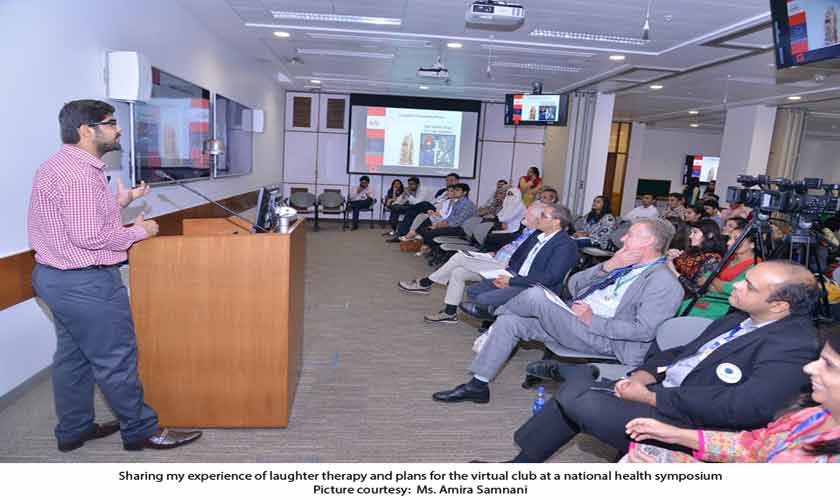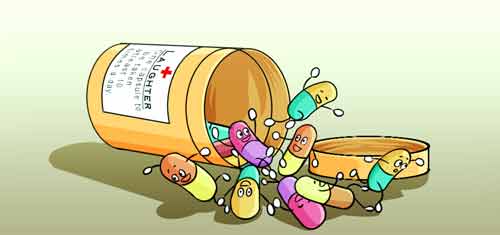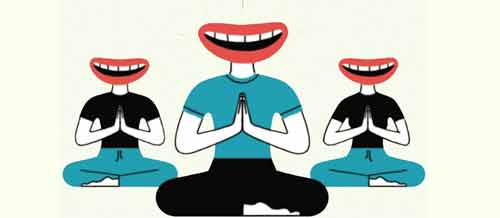A soft giggle, a humorous chuckle, a shrill cackle, a loud bray, an unrestrained guffaw, a hearty howl. We all resort to this every once in a while.
They only smile; I laugh
A soft giggle, a humorous chuckle, a shrill cackle, a loud bray, an unrestrained guffaw, a hearty howl. We all resort to this every once in a while. It’s the “cheapest medicine”, the “most effective weapon” against haters after all. A secret joke, a sheepish face-saving attempt, a cover-up for your pain, laughter has been there for us. And since it worked, we’ve never really given a thought beyond it, never realized that there could be much more to this to keep us healthy, to see that we live fully. Sarmad Soomar, a laughter yoga trainer, believes so.

Yes, you’ve read it right. A laughter-yoga trainer. Confused? Never heard of it? well, here’s the deal: you practice different yoga and deep breathing exercises along with laughter; both are kind of merged.
“I was inspired from the movie Munna Bhai MBBS where the Dean, Dr. Asthana, creates humorous moments with his friends in order to practice laughter. I personally started looking for it and giving this practice a value,” he shared. “Still, I was not sure how much this was benefiting me until I came to know Dr. Madan Kataria through a television show. Dr. Madan - who is from India - and he helped me through an online curriculum.”
“I joined his virtual laughter club that he had been managing through Skype. It was a convenient option. People who were introduced to the team became part of the club in categories of different countries. A call was generated and self-initiated laughter and giggling were practiced. The timings varied, but the meet-up was a routine,” he elaborated.
Persuaded thus, he began a whole new virtual laughter club. “I involved a group of people around me and received a positive response. However, due to various reasons, like work pressure or unawareness, there is an obvious lack of connectivity Pakistan.”
It’s sad that people hardly know of the numerous plus points of something as natural as laughter; even self-initiated laughter has been shown to reduce anxiety. From being a brilliant form of care for mood disorders to overcoming depression to taming obsessions to fighting obesity to decreasing suicidal intention to strengthening immunity and the cardiovascular system to keeping one whole and hearty during some forms of cancer, it can do wonders.
Now self-induced or fake laughter may sound silly to some of you. Not to say difficult than cracking up on a joke. But laughter therapy is even more pertinent to our society given that young people are easily stressed nowadays.

“Most of the time people shared that self-initiated laughter is considered as a manic experience by others who are watching you. In my opinion, every action is challenged by people at the beginning but accepted later on. So, keep on with this madness and grab the benefits. You can guarantee your fun, not the entertainment of others. As time passes and people become aware of these therapies, they’ll start accepting and practicing them.”
Sarmad admits that it is difficult initially. “I can suggest exercises. What counts though is practicing with conviction, which is challenging. As soon as youngsters begin to give time to them, they can learn and practice the activity on their own. Most people in the group were clueless when it came to laughter; how can a person practice something when they don’t feel like it. My answer to this was simple - practice and routine.
We don’t tell jokes to make people in our club laugh. We are not comedians. We take it as a therapy. Our perspective is to make it a habit to laugh - it’s like what we usually do, the only difference is this laughter is without a reason. Seriously, you don’t have to have humorous scenes, for instance. You can begin with a fake hahaha and end up with a huge roar.”
Those who participate in his workshops try a variety of exercises as stimulation. These include moving joints, pat knee, shaking the waist and moving the neck. Each step has a funny interpretation.
“Although self-initiated laughter is the one recommended, media sources (for example, comic movie scenes or plays) are never discouraged. There is no specific encounter which I find particularly amusing; it’s just that the clients following my lessons have repeatedly (and unanimously) mentioned is how my style of laughter is way better than my techniques for this purpose!”
Are the sudden variations in his exercises and the way he laughs deliberate? Perhaps to engage his audience? “Of course,” Sarmad replies.
We know how infectious it can be. I’m laughing. Are you?
People from over 100 countries around the world are practising laughter as a group exercise or individually. Whether it is to relieve the tension or to work on personal efficacy, laughter yoga has proved to be very useful.
There’s no secret code, no billion-dollar question here. Your body cannot distinguish between real and fake laugh. In scientific terms, it’s actually the endorphins, which are released into the blood when we laugh, doing their magic. It’s not just a “hee-hee” “ha-ha” sound. The twist to revolutionize this old concept is to laugh until you are physically, mentally, emotionally, spiritually, socially at peace.